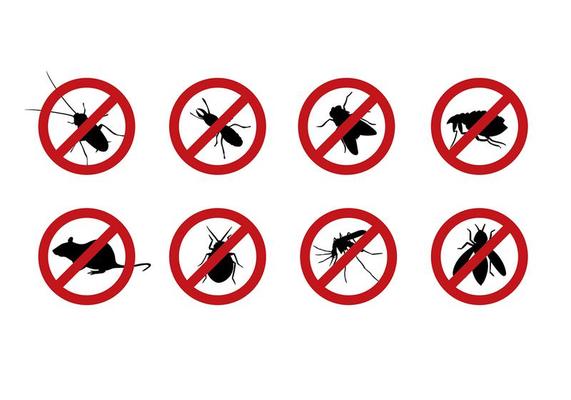Efficient A1 Bed Bug Treatment in Charlotte - Safe and Proven Techniques
Efficient A1 Bed Bug Treatment in Charlotte - Safe and Proven Techniques
Blog Article
Bed Pest Therapy Break Down: Comparing Chemical Vs. Non-Chemical Solutions
In the realm of pest control, specifically when handling the relentless concern of bed insects, the selection between chemical and non-chemical therapy remedies can be a critical one. Both strategies provide unique advantages and drawbacks, influencing factors such as effectiveness, safety factors to consider, and overall expense. By analyzing the nuanced details of each method, a clearer understanding of which course to go after in attending to a bed bug problem can be obtained.
Effectiveness of Chemical Therapies
Chemical therapies for bed pest infestations have actually been extensively identified for their quick and potent effectiveness in eradicating these insects. When considering the effectiveness of chemical treatments, it is essential to recognize that they can give a fast and detailed option to a bed bug issue.
Furthermore, chemical therapies have the benefit of supplying recurring effects, suggesting that they can proceed to remove bed bugs even after the initial application. This residual activity is particularly valuable in combating any possible re-infestations. In addition, the rapid action of chemical treatments can bring alleviation to people encountering extreme bed pest invasions, permitting them to restore control of their living areas rapidly.
Safety And Security Problems With Chemical Solutions
When making use of chemical services for bed pest treatment is guaranteeing the safety and security of residents and the environment,One important facet that calls for cautious consideration. While chemical treatments can be efficient in eliminating bed bugs, they may posture threats otherwise handled properly. Among the key security problems with chemical options is the potential damage they can trigger to human health. Direct exposure to particular chemicals made use of in bed pest therapies can result in breathing concerns, skin inflammation, or various other adverse reactions, specifically in people with pre-existing problems or sensitivities. Furthermore, inappropriate application or dose of chemical pesticides can result in hazardous deposits remaining in the cured area, posturing long-term health and wellness dangers to occupants.
In addition, the ecological influence of chemical options is another considerable factor to consider. Some chemicals made use of in bed bug treatments might be dangerous to advantageous bugs, wild animals, and environments if they seep into the soil or water systems. It is vital to use chemical treatments carefully, adhering to security guidelines, and thinking about less hazardous choices to mitigate these dangers and make certain the risk-free and efficient monitoring of bed bug invasions.
Advantages of Non-Chemical Approaches
Taking into consideration the potential security issues and environmental impact linked with chemical options for bed pest therapy, exploring non-chemical methods provides a promising option with numerous distinct benefits. Non-chemical treatments are eco friendly, as they do not add to air or water pollution, making them a lasting choice for bug control.
In addition, non-chemical services can be efficient in targeting bed insects, including hard-to-reach locations where chemical therapies may not permeate. Approaches such as warmth treatment, vacuuming, steam cleaning, and cushion encasements offer complete removal without making use of damaging chemicals. Furthermore, non-chemical approaches can be much less disruptive, calling for minimal prep work and permitting quicker reentry into dealt with areas. Generally, choosing non-chemical bed insect therapy approaches not just focuses on safety and environmental security however also guarantees efficient and thorough insect control.
Limitations of Non-Chemical Treatments

Furthermore, non-chemical treatments frequently call for numerous applications to accomplish successful eradication. This can be lengthy and might not always guarantee full elimination news of all bed pests and read the full info here their eggs, specifically in surprise or hard-to-reach places.
Additionally, the success of non-chemical therapies heavily counts on proper application and thoroughness, which can be testing for individuals without expert competence. Inadequate application of non-chemical methods may result in incomplete eradication, leading to relentless infestations and the requirement for extra therapies.
Therefore, while non-chemical treatments have their benefits, it is necessary to acknowledge these limitations and consider them when identifying one of the most efficient strategy for handling bed bug invasions.
Expense Comparison: Chemical Vs. Non-Chemical Options
Provided the limitations related to non-chemical therapies, a crucial facet to evaluate in the context of bed bug management is the cost contrast between chemical and non-chemical alternatives. Chemical therapies normally include the application of pesticides by specialists, which can vary from $250 to $900 per space, depending on the seriousness of the problem and the size of the area to be dealt with. On the other hand, non-chemical therapies like warm treatment or steam can be more costly, with prices varying from $1,000 to $6,000 for a whole home. While the preliminary cost of chemical therapies may seem lower, numerous treatments may be called for to completely eradicate the invasion, potentially boosting the general price. On the various other hand, non-chemical options might give a much more sustainable and environment-friendly solution, although they can be cost-prohibitive for some individuals. Inevitably, when taking into consideration the expense of bed insect treatment choices, it is necessary to weigh the in advance expenses against the efficiency and long-term sustainability of the picked method. click site
Verdict

Thinking about the possible security worries and ecological impact connected with chemical options for bed pest therapy, exploring non-chemical strategies offers an appealing option with a number of distinct advantages.Given the restrictions connected with non-chemical therapies, an important aspect to examine in the context of bed bug monitoring is the cost comparison in between chemical and non-chemical options. In comparison, non-chemical therapies like heat therapy or vapor can be extra pricey, with expenses ranging from $1,000 to $6,000 for an entire home. While the first price of chemical therapies might appear lower, several treatments may be called for to fully eliminate the invasion, possibly increasing the total expense.In final thought, when contrasting chemical and non-chemical bed pest therapy alternatives, it is crucial to consider efficiency, safety, advantages, restrictions, and price.
Report this page